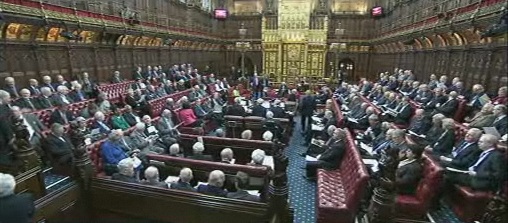Was it Labour peers who blinked first?

Why did their vote collapse in the final division?
The big news from Westminster overnight was that the Parliamentary Voting System and Constituencies Bill received the royal assent at 11.45 pm after the government won the final vote in the upper house overturning previous defeats.
This means that the AV referendum will take place as planned on May 5th 2011 and there there will be NO turnout threshold – the last major point of contention.
This followed an intensive couple of days in which the commons kept overturning a series of amendments from the Lords who promptly insisted on reinstating them. At the end of the day it was the group of Labour peers who blinked first and in the final crucial division, on the turnout threshold, only 134 of them voted compared with 182 earlier. Joining them were just seven Tory rebels compared with the 27 who had voted against the government earlier in the day.
So after their prolonged filibuster that threatened to derail the bill and seriously embarrass the government the red team didn’t muster enough troops at the end. The final vote was 221 to 153 to the government.
The act brings automatically brings in AV for parliamentary elections, should the referendum decide in favour, as well as instituting the commons seat reductions and constituency equalisation that were key for the Tories. Interestingly both are dependent on the other.
If there is a YES vote then AV will not come into force until late 2013 when the boundaries will be finalised.
So we have a double lock which binds the coalition partners together until, effectively, 2014. The Tories don’t want the next general election until the constituency measures are in place – the Lib Dems won’t want one until, assuming the referendum goes their way, AV will operate.
The big question is how the yellows will react if the referendum outcome is a NO.